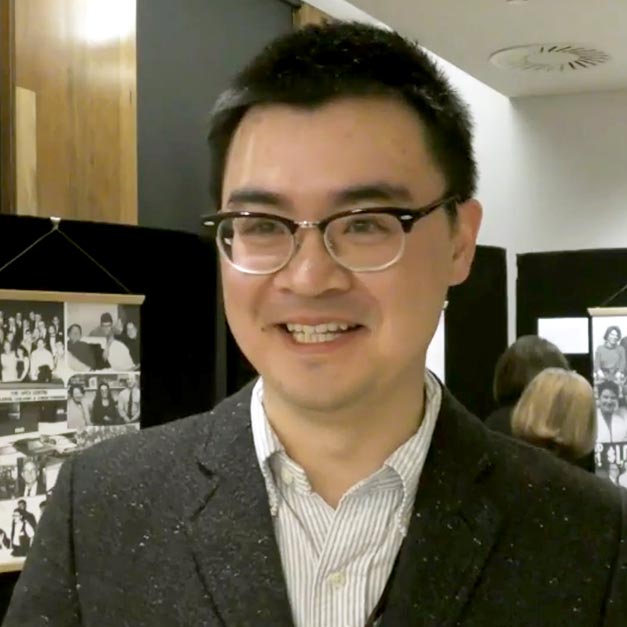Research And Grants

University of Sydney - $100,000
Dr. Han Shen
$100,000.00
November 2019
Translational
DIPG
Targeting hypoxia and mitochondrial metabolism with repurposing drugs as an approach of radiosensitization for diffuse intrinsic pontine gliomas.
Diffuse intrinsic pontine glioma (DIPG) is a rare and incurable brain tumor that arises in the brainstem of children predominantly between the ages of 6 and 9. Unlike many brain tumors, DIPGs cannot be removed through surgery due to its sensitive location. The standard of care today remains radiation therapy (RT) alone. Unfortunately, almost all DIPGs recur locally within 12 months secondary to radioresistance. Therefore, it is important to understand the mechanisms of radioresistance, as this may be used to improve the radiosensitivity and offer a pathway to the development of novel therapies for this deadly brain tumor. Hypoxia, a condition in which the body is deprived of adequate oxygen supply at the tissue level, is a common microenvironmental feature of all solid tumors, playing a vital role in radioresistance. Recent reports showed that DIPGs are exposed to a hypoxic microenvironment, suggesting targeting of hypoxia may be effective to improve their radiosensitivity. My preliminary data have shown that the radiosensitivity of DIPG cells was significantly improved when treated with biguanide, a class of diabetes drug that can reduce hypoxia, and this radiosensitising effect was further improved when a second drug was combined to further modulate sugar metabolism. These findings could potentially form the basis for pharmaceutically targeting hypoxia and tumor metabolism as a new radiosensitising treatment for incurable DIPG. Children currently diagnosed with DIPG have no hope of cure and are offered palliative treatment only. RT is the only effective treatment for DIPG to date although it only provides relief of tumor-related symptoms in roughly 70% patients. However, all DIPGs recur locally secondary to radioresistance, thus improving the effect of RT remains the most promising avenue to better outcomes in DIPG patients. Cells under hypoxia, a condition where the tissues do not have enough oxygen supply, are 2-3 times more resistant to RT than cells that are well oxygenated at the time of irradiation [1]. A recent study reported that DIPG cells are exposed to a hypoxic microenvironment, suggesting these cells are intrinsically resistant to RT [2]. These findings also suggest that targeting hypoxia may be an effective strategy to overcome the radioresistance of DIPG cells. Biguanides (metformin/phenformin) are a class of drugs that are currently used in clinic for the treatment of Type II diabetes. Apart from lowering blood sugar level, biguanides can also reduce the oxygen consumption of cells by targeting mitochondria, the rod-shaped organelles that can be considered the power generators of cells. By lowering tumor demand for oxygen, the hypoxic condition can thus be lessened. In our pilot studies, we have observed that metformin largely improved the efficacy of RT in a mouse model carrying DIPG cells in their brains. This exciting result led us to further optimize this strategy such that a better efficacy can be achieved. Given metformin is reliant on certain transporters to enter tumor cells [3], we proposed to use a similar drug phenformin as it does not rely on those transporters to enter cells [4], thereby allowing higher drug concentration in tumor cells. Strikingly, phenformin is ~30 times stronger than metformin to slow the growth of DIPG cells. Phenformin reduced oxygen consumption rate which in turn increased lactic acid production. Given high level of lactic acid is the primary adverse effect of phenformin and strongly correlates with poor clinical outcome, a strategy is thus needed to counteract this unfavorable side effect. Dichloroacetate (DCA), a compound that lowers blood lactic acid levels, was selected to offset this side effect, not only because it is an orphan drug to treat high level of lactic acid, it is also well tolerated by children [5]. When DCA was combined with phenformin, the high level of lactic acid production was largely blocked. Surprisingly, the combination also led to a much stronger cell killing effect by depriving tumor cells of energy supply and damaging their DNA. Moreover, the combination also reduced the level of two master regulators that collaboratively enhance the cancer cell growth/survival and metabolic needs through increased uptake of sugar and contribute significantly to radioresistance. When RT was combined with phenformin and DCA, the most effective activity was observed, with the triple combination leading to the lowest number of surviving DIPG cells. More importantly, both phenformin and DCA can readily cross blood-brain-barrier (BBB), have long been used in clinics, and are very well tolerated by young children. Therefore, they are the drugs with the most amount of testing and closest to being tested in clinical trials. Given the results generated from this project will be rapidly translated to clinic and benefit children with DIPG, the anticipated impact of this research project is of great significance: it may lead to a change in treatment regimen resulting in longer survival rates for the pediatric patients with newly diagnosed DIPG.

